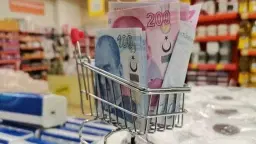Even though the episode of slow growth that started in the first quarter of 2011 has ended by Q1 2012, the recovery has not started yet.
Last week foreign trade statistics for June was announced. For the current quarter, the developments in both exports and imports are of great importance. Since the first quarter of 2011, the economy has been growing with a decreasing pace and we are curious if this trend continues or not. And if it does, will we be faced with a stagnant growth trend or a recovery? These questions are important for estimating the overall growth in 2012. Moreover, it is critical for identifying whether unemployment that has been stuck at 9 percent for a long time will continue its inertia.
In the first quarter, growth rate stood at 3.2 percent. Excluding the artificial growth effect resulting from extensive importation of bar gold during 2011 and exportation during 2012 quarter one, the rate falls to 2.6 percent. In any case, growth was below the potential growth rate of the Turkish economy that floats around 4-4.5 percent. Also taking into account the pace of population growth, new entries in the workforce and the possibility that the population recorded in the agricultural sector are “actually” willing to work in urban areas, there is an evident risk that growth being below the potential further pushes up unemployment.
Second quarter not different from the first
In May, both total imports and non-energy imports increased year-on-year. Non-energy imports are particularly important, closely related to growth performance. In five consecutive months before May, both total and non-energy imports had demonstrated year-on-year drops. In June, the figures turned downwards again; the recovery in May was temporary. If we check annual data for the first quarter in order to better understand the implications for growth performance, we see that non-energy imports decreased year-on-year by 7.4 percent in both the first and the second quarter. In a nutshell, in both quarters, Turkey imported less investment goods for new investments and less intermediate goods for production compared to the previous year. Therefore, the figures back my argument that growth performance in the second quarter will not be much different than it was in the first quarter, as I repeatedly claimed at this column.
The recovery has not begun yet
As you might remember; Turkey owed the year-on-year growth in the first quarter largely to the export growth. Domestic consumption was stagnant and investments showed only a slight improvement. Export performance in June was also promising. Exports grew year-on-year by 12.4 percent in the first quarter and by 14.3 percent in the second. These figures also support the idea that growth performances in the first and second quarters are alike. On the other hand, according to the data that excludes gold trade, released by the Turkish Exporters Assembly exports decreased in July.
So, here is the moral of the story: Even though the episode of slow growth that started in the first quarter of 2011 has ended by Q1 2012, the recovery has not started yet. We observe a stagnant growth outlook, which can possibly continue in the third quarter as well. Of course, it is too soon to discuss this possibility.
This commentary was published in Radikal daily on 07.08.2012





